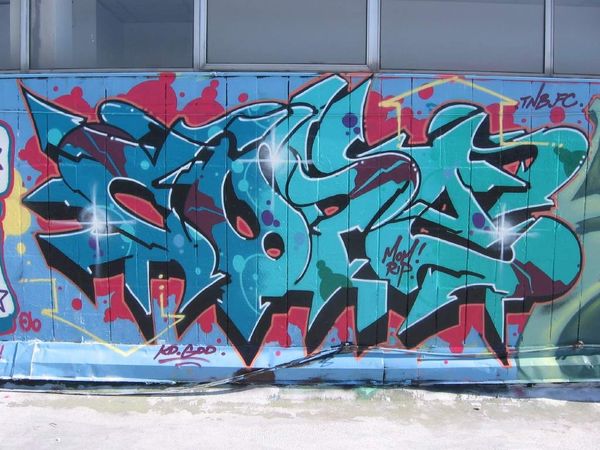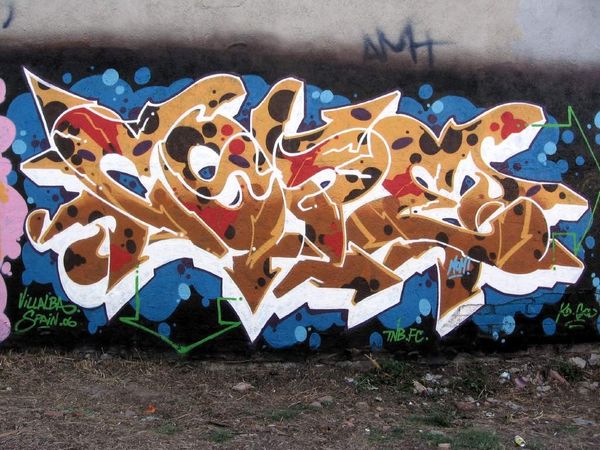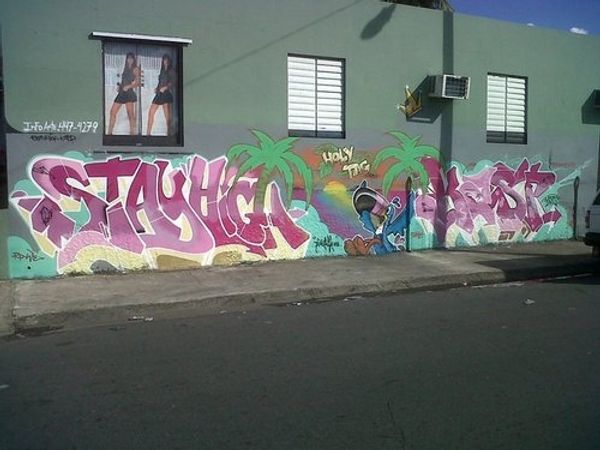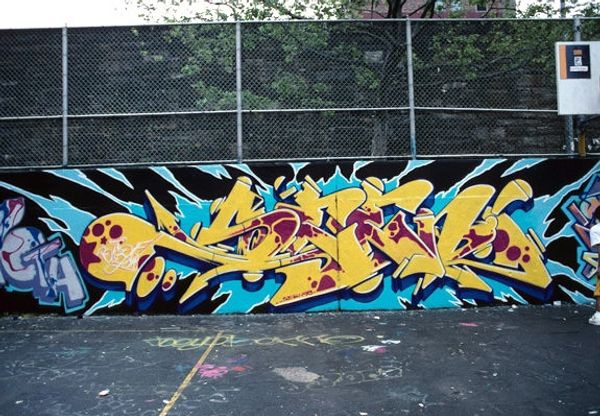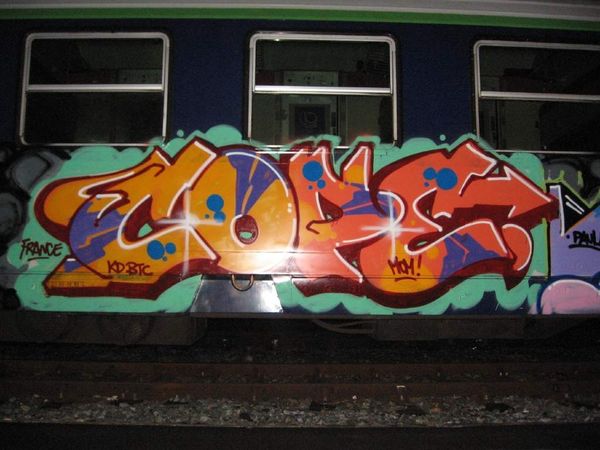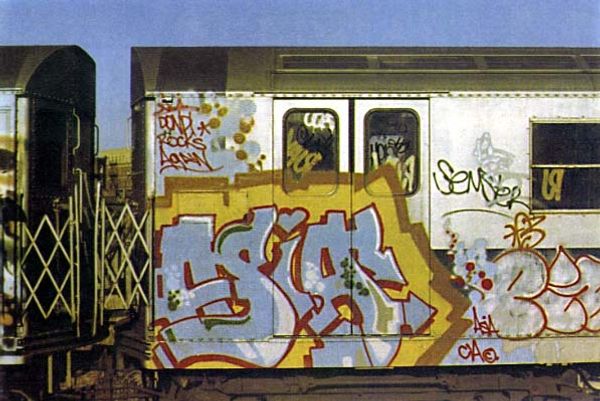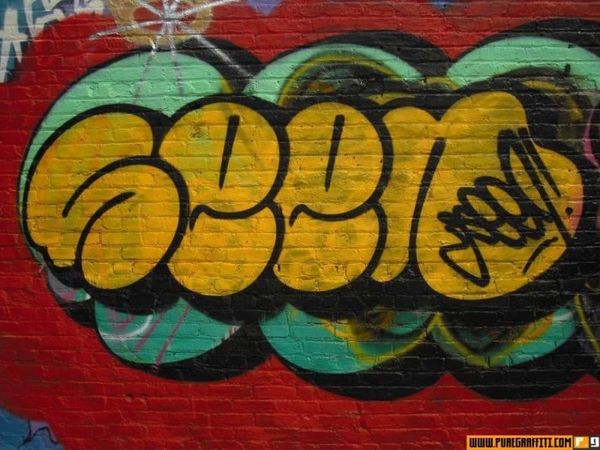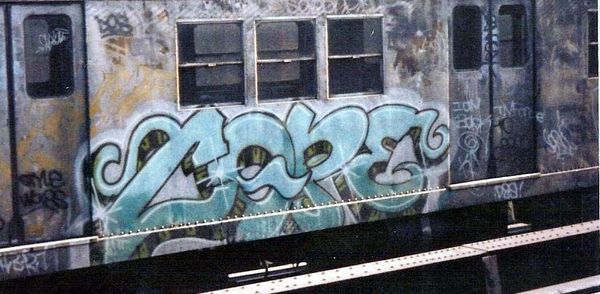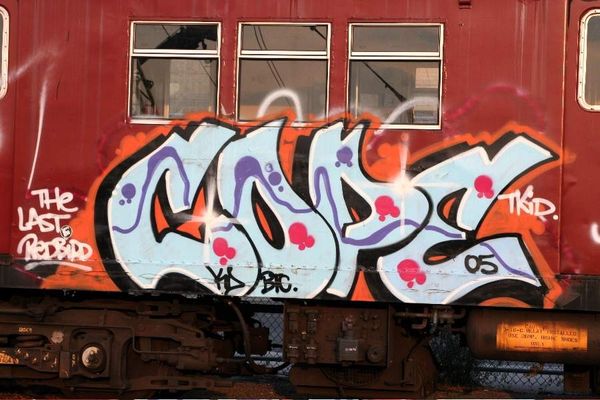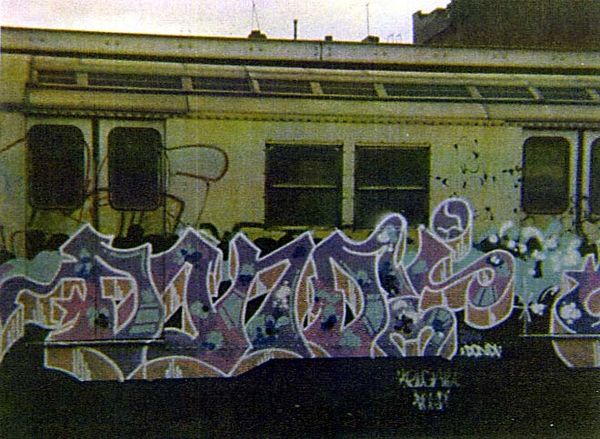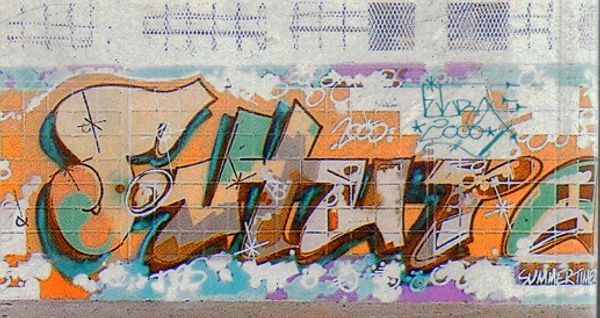
#
african-art
#
graffiti
#
street-art
#
graffiti art
#
street art
#
graffiti design
#
street-art
#
urban advertising
#
text
#
graffiti-art
#
street graffiti
#
urban life
#
urban art
#
tagging
#
text in urban environment
#
calligraphy
Copyright: Cope2,Fair Use
Curator: This mural is entitled "Throw-Up," created by Cope2. At first glance, what impressions does it leave you with? Editor: Well, it feels very assertive and immediate. The monochromatic palette with the blocky shapes against that corrugated wall lends itself to this visual tension between raw urban expression and something a little bit more deliberately constructed. It's both fleeting and permanent, you know? Curator: Absolutely, and the act of "throwing up" as a style carries symbolic weight. This quickly executed form of graffiti functions almost like a signature, a declaration of presence in the urban landscape. Editor: Right, the lettering also tells such a powerful story. It reads 'COPE2' and 'Bronx King!'. Given Cope2's history in the Bronx, doesn't that assertion become part of a much larger narrative about claiming space and identity within a historically marginalized community? Curator: Precisely. Notice too the almost playful use of the tag “Tokyo, Japan”. Street art, as an extension of urban life, connects globally. A symbol acts as a constant that persists despite location, in defiance of ever-changing material contexts. Editor: That makes me think about the accessibility of the medium too. Unlike traditional artworks displayed in galleries or museums, the street becomes the canvas. It engages passersby directly, making art more accessible to everyone, which speaks to the powerful democratic potential of street art. Curator: It's true, the use of shadow and a slight 3D effect, even in such a rushed work, indicates attention to artistry in addition to communicating identity. To what extent is graffiti art historically an attempt to beautify often bleak or neglected environments? Editor: It absolutely can be, though beautification, if it's the intent, often clashes directly with legality and authority. Street art is often about challenging power structures as much as it is about aesthetics. Looking at the historical context of cities around the world, this claim takes various shapes, but fundamentally involves visibility and voice. Curator: So this is more than mere vandalism then. We see echoes of self-assertion and the declaration of territory, an age-old behavior exhibited by humans and animals. What is our compulsion for this type of visual mark-making? Editor: I'd say Cope2’s "Throw-Up," is so complex because it distills something so urgent about belonging, challenging, and visually reshaping our environment through symbolic tags. Curator: Ultimately a fleeting snapshot of contemporary culture. Editor: Definitely a provocative moment captured.
Comments
No comments
Be the first to comment and join the conversation on the ultimate creative platform.
